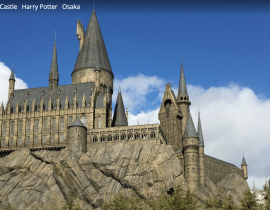If you like traveling, you are probably wondering when to visit this or that country. What is the perfect time to visit Eastern Europe? Well, it depends. Of course, you can take into account weather conditions, current political situation and such. But what if you check up the Holiday calendar of the countries you are going to visit? There is nothing more exciting than visiting a new country during some national holidays and festivals. It is a great chance to experience some new traditions and learn the culture of the country you are visiting. You can become a part of something big and wonderful.
Ivan Kupala
It is a good idea to visit Eastern Europe in summer. First of all, it is warm. Second of all, you will get to try all those delicious berries and fruits. And at last, they celebrate Ivan Kupala day in summer. On the night of 6-7 July, to be exact. This festival’s history goes back to ancient Slavic times. However, it is still a very popular holiday which lots of young people take part in every year. This bright festival includes lots of rituals. Girls make wreaths out of wild flowers and float them on the rivers. They believe that their future partner will find the wreath they made. If you are brave enough, you can join the Europeans in some other rituals, such as jumping over the bonfire.
Christmas Day
Christmas is one of the most popular holidays all over the world. Eastern Europe is not an exception. However, the traditions here are different. Not everyone knows that Orthodox Christians celebrate the Birth of the Lord on 7th January, and not on 25th December. This is a holiday you would not want to miss if you are traveling to Serbia, Georgia, Ukraine or Russia in winter. It is observed on the night of 6-7 January. People usually have a family dinner which includes some traditional dishes on that day. There is also a Christmas liturgy in the church which lots of people attend. On Christmas Eve, it is common to do some fortune-telling, which is pretty exciting, if you are not scared of those magical rituals.
Maslenitsa
This is one of the most colorful festivals of the Eastern Europe. This is when people are saying good-bye to winter and welcome spring. It normally falls on the end of February or beginning of March. The festival lasts for the whole week, and there are lots of things to do and try. The symbols of Maslenitsa are pancakes, snowball fights, and sledding. February is the coldest month of the year, so it is logical that people are trying to get rid of winter as soon as possible and keep themselves warm. For this reason, they also make a straw effigy of winter and put it on fire. An extraordinary ritual, indeed! The last day of the festival is called Sunday of Forgiveness. On this day people usually ask for forgiveness from all their relatives and friends. Nice tradition, is not it? It is good to know that there is a special day in a year to say “Sorry”.
Labor Day
May is one of the best months to visit Eastern Europe. There are lots of national holidays and celebrations during the last month of spring. They celebrate Labor Day on the 1st of May. It is a day off, and most people go for a picnic with their friends. Barbecued meat and vegetables are the most popular attributes of the holiday. There are lots of festivals during the first days of May in many European cities. Flower festival and Culinary Festival are ones which are the most popular.
Victory Day
In Eastern Europe, they do honor their history and traditions. This is why they encourage young people to respect and value the act of bravery their grandparents and great-grandparents committed when they took part in the World War II. Victory Day is celebrated on 8th May annually. On this day, they have grand parades during the day in all the big cities and terrific fireworks in the evening. National TV channels perform some war related films on that day, and there are lots of concerts in the parks and central squares all over the Eastern Europe. People also visit the veterans of the war and pay tribute to their great deeds.
There are lots of festivals and fun traditions in the countries of Eastern Europe. No matter, when you are going to visit, you will surely have a chance to take part in some wonderful events and bright rituals. Europeans are known all over the world for their hospitality, so tourists are most welcome to join them in the numerous festivities, involving the most delicious food and colorful traditions. Those will surely bring lots of joy and unforgettable experiences. So, why not to start planning your next trip today?
About the Author:
This article was written by Dana Konotop, savvy travel blogger at asabbatical.com , a personal travel blog of Adrian Sameli. To connect with Dana, follow her on Facebook.










